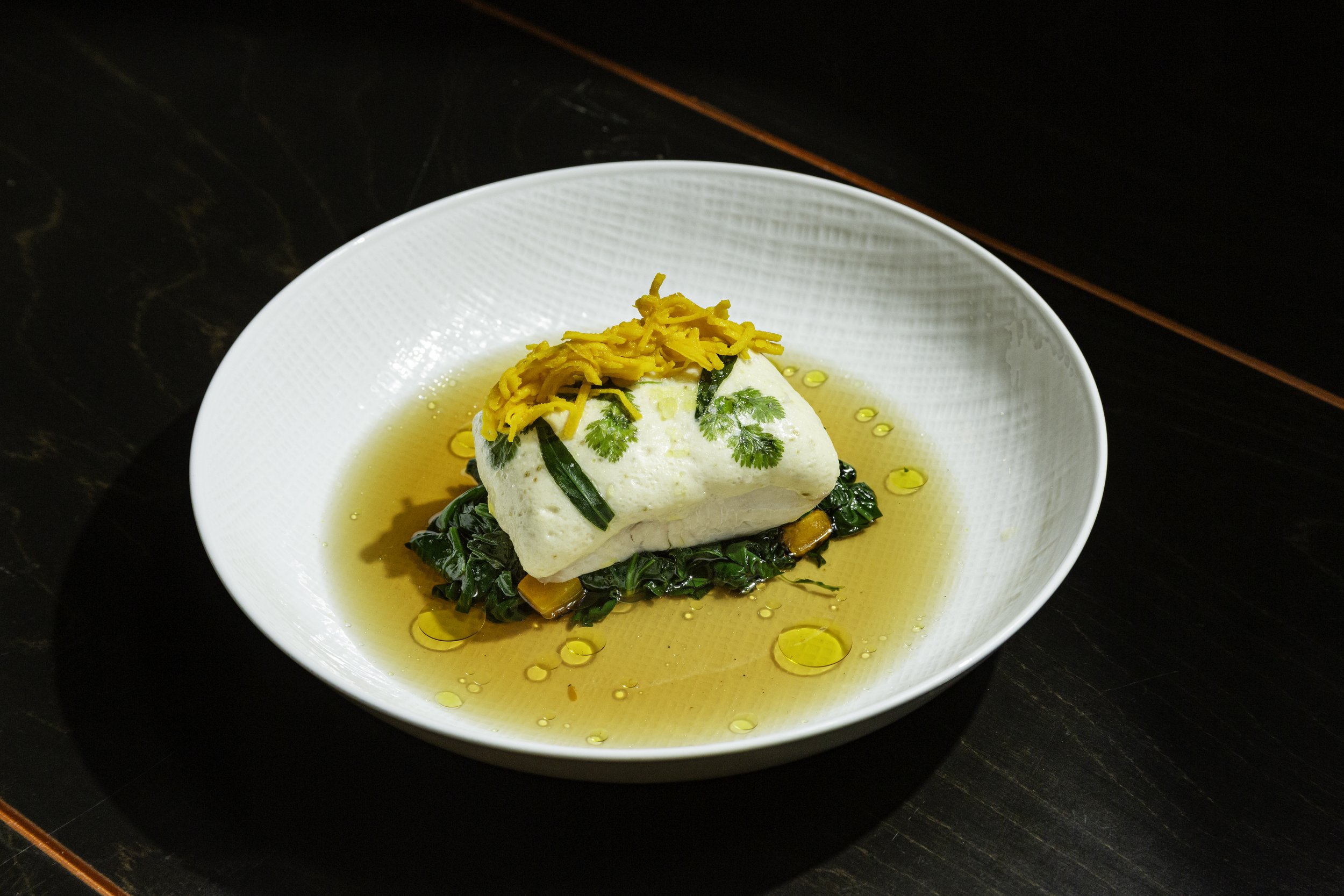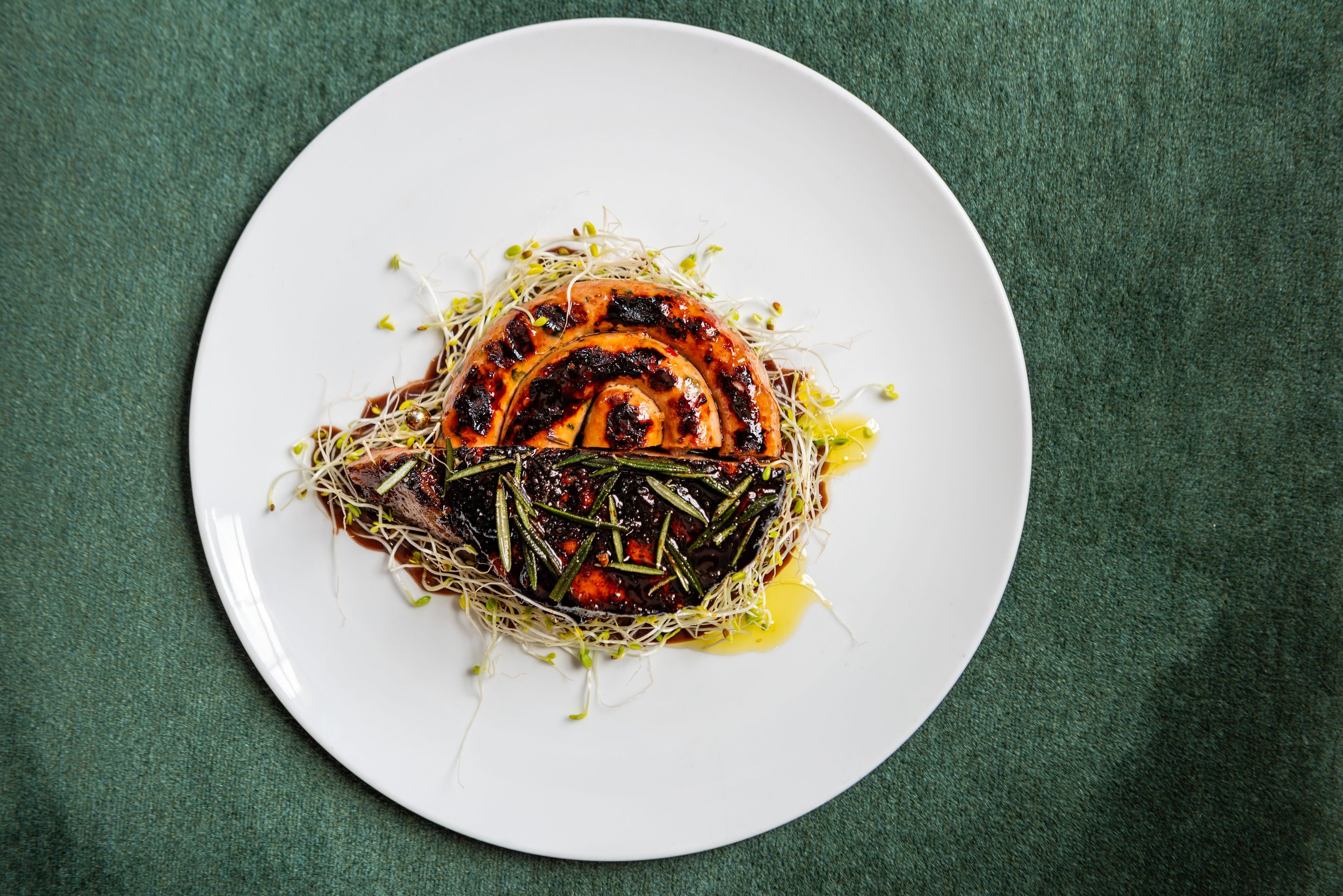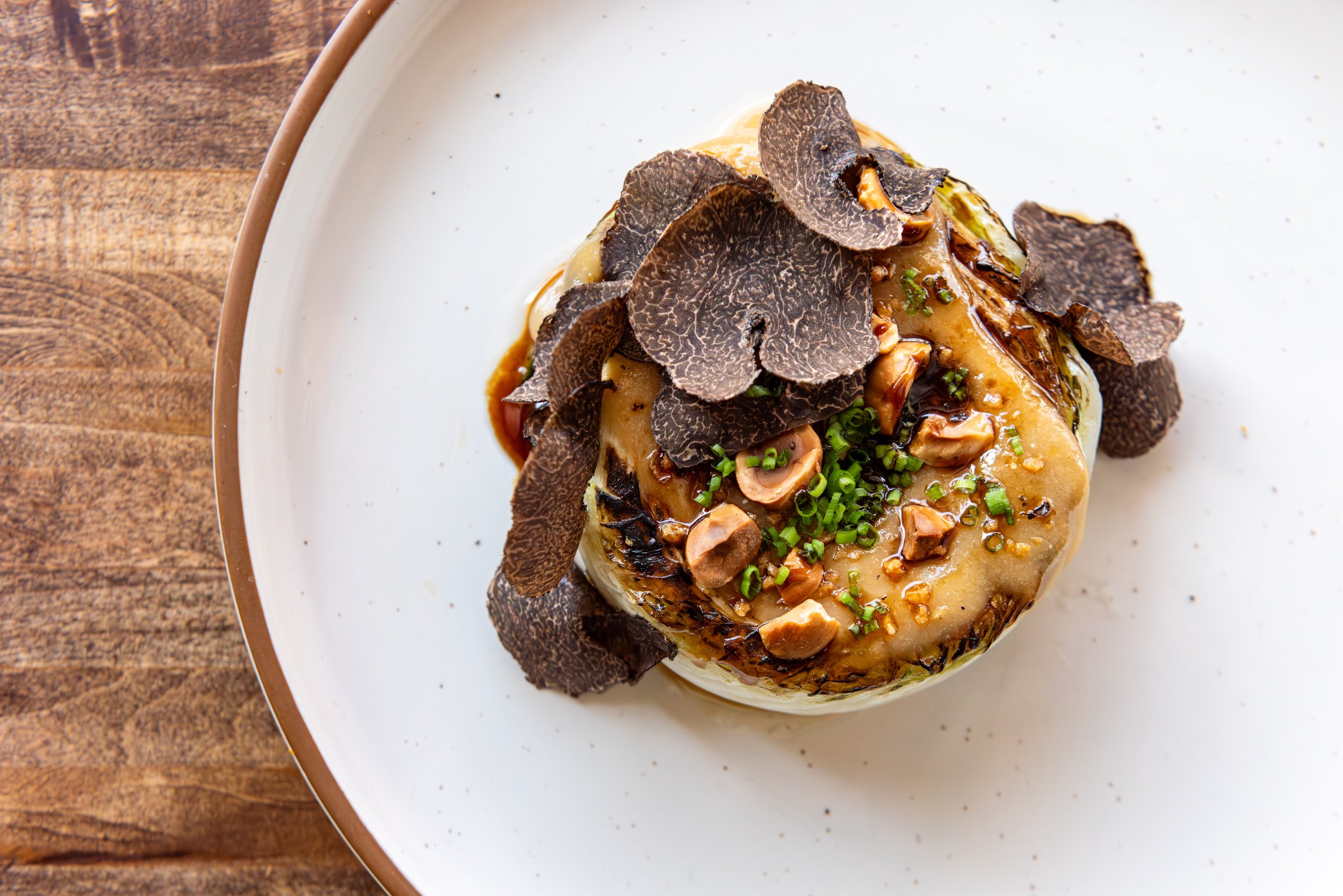The Lighter Side of Squash
At Southwark, Chef Ryan LaFrance transforms winter produce into a delicate dish.
PHOTOS: RAEANN SERRA
Ask Chef Ryan LaFrance where he sources his ingredients from and prepare yourself for an enthusiastic lesson on each farmer, vendor, vegetable, and hog coming into his kitchen at Southwark.
From the produce to the poultry, LaFrance wants “everything [to be] coming from somewhere close.” As someone passionate and knowledgeable about sourcing and seasonality, when LaFrance learns something new about a vegetable, it becomes a big deal. “There was something else I was working on that I was gonna reduce squash juice for, and I learned that squash juice, when heated, naturally clarifies once it hits a boil,” says LaFrance. “It's super clear. Once I learned that, I knew I wanted to make a dish with it.” The clarified juice energized his creativity. It was an opportunity to work with a new technique and build a dish off of a vegetable that is “usually used in a heavier way.”
Crab Consommé
LaFrance, inspired by his discovery, set out to make a consommé with the clarified squash juice. He wanted to build on the “delicate profile” of the squash and show “a lighter side of the vegetable.” He starts by making a stock out of Maryland blue crab (sometimes shrimp, depending on the season) as a way to tone down the sweeter squash flavor. However, “crab makes a murky stock,” and LaFrance still wanted the final consommé to be clear. He did not want to use a raft to achieve this clarity and, instead, spent some time researching alternative methods of clarification. He rediscovered gelatin clarification, which hit him like a lightning bolt. He fortifies the crab stock with fluke bones, fennel, onion, citrus leaves, and squash juice, then puts it in the freezer. To clarify, LaFrance slowly thaws the fortified stock over a fine mesh sieve. The naturally occurring gelatin clings to the impurities and won't pass through the filter. Although successful now, there were, at first, several challenges. It “will take a good 10 to 12 hours,” he says, and “you have to marry the batch. The first ten percent and the last ten percent do not taste the same. [The liquid] gets watered down for some reason.” LaFrance strains the fortified stock one quart at a time and moves the clarified liquid that comes through to the fridge every hour. After the stock has been processed through the fine mesh sieve, a crystal clear yet flavorful consommé remains.
Mahi Mahi Mousse
To complement the delicate flavors and textures of the dish, and as a way to utilize scraps, LaFrance blends together mahi mahi trimmings, egg, and cream to create a mahi mahi mousse. The trimmings are added to a food processor with one egg for every pound of fish and blended until broken down. LaFrance then adds heavy cream by eye. "It is something that depends on the fish, how old it is, and how big the egg was.” After passing the blend through a tamis, he seasons the mousse with salt and fennel seed, transfers it to a piping bag, and pipes it on top of a mahi mahi fillet. On plastic wrap, LaFrance lays down herbs then places the fish on top, mousse-side-down, wrapping and shaping it gently before moving it to the fridge.
Mahi Mahi
Mahi mahi is “one of the most sustainable fish you can use,” says LaFance. “I also enjoy it because it's versatile. I think it's overlooked.” To cook the mahi mahi, LaFrance—inspired by techniques he learned from Chef Greg Vernick while working at Vernick Food & Drink—uses a stovetop steamer. “It’s important for it to be a gentle steam; if not, the texture of the mousse changes.” The fish is steamed for around 30 to 90 seconds in the plastic wrap, then unwrapped, seasoned, and returned to the steamer for another five to six minutes.
Squash Kraut
At Southwark, after the pandemic, LaFrance and his team started regularly—and, at times, randomly—fermenting various vegetables. When a product is in season, they jar it up and “wait to see what happens.” In this case, LaFrance’s patient gamble paid off. After presenting an early version of the mahi mahi to his team, there was a general consensus that the dish “needed acid, balance, and something with a little punch.” Luckily for LaFrance, he remembered the box-grated butternut squash that had been fermenting in his kitchen for the past two months. A spare blend of squash and salt, the fermented squash is served on top of the fish. Its vibrant tang is mellowed out with a bit of olive oil, acting as a “really good supporting character” to the acidic squash and rounding out the dish as a whole.
Wilted Spinach
The fish is served on top of a bed of wilted spinach, but for someone who is a big fan of spinach, LaFrance wanted to “treat it right.” The locally sourced spinach is blanched to remove the feeling of dry-mouth and is then sautéed in roasted garlic oil.







